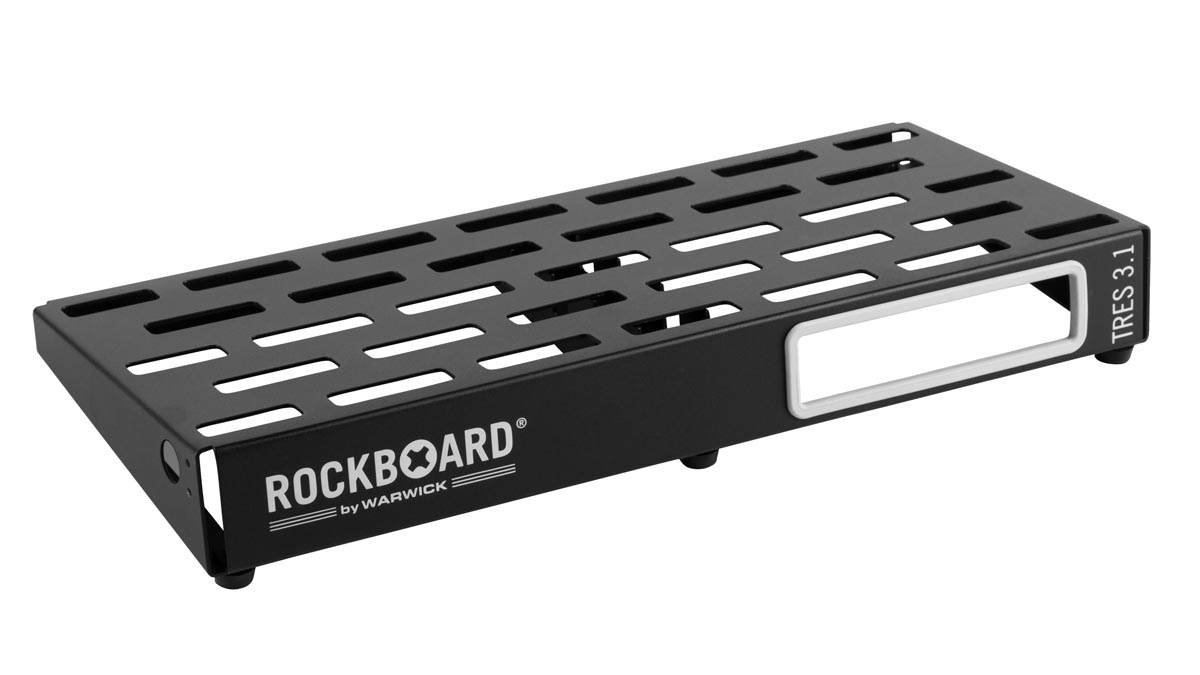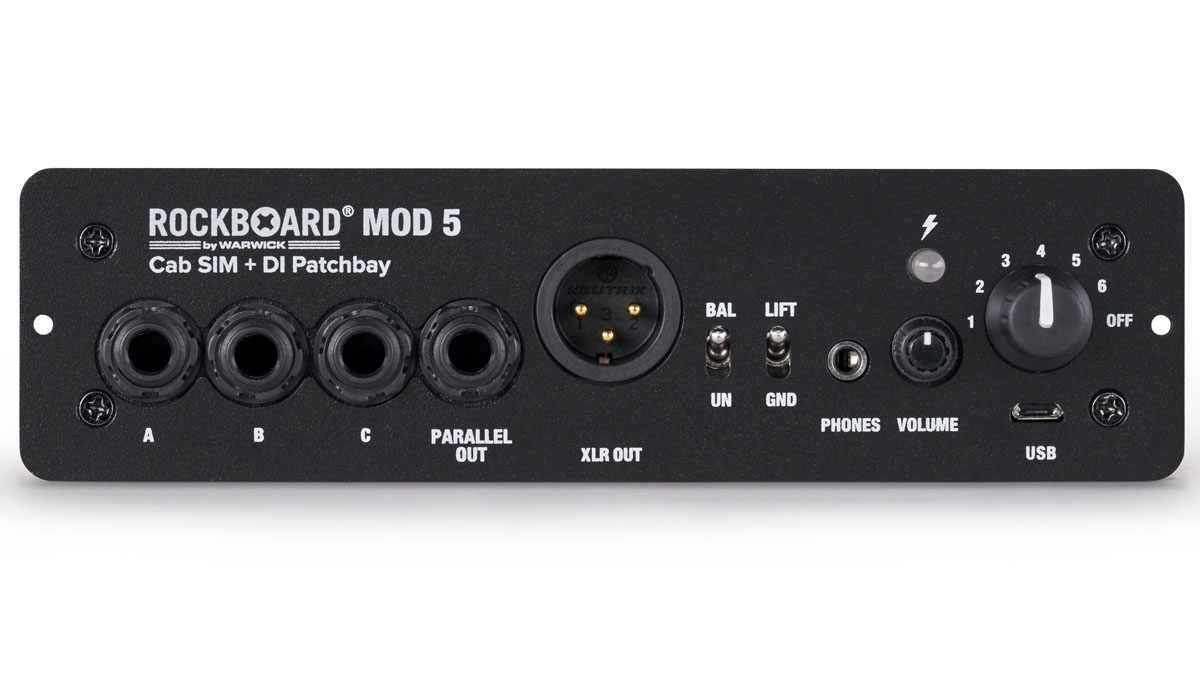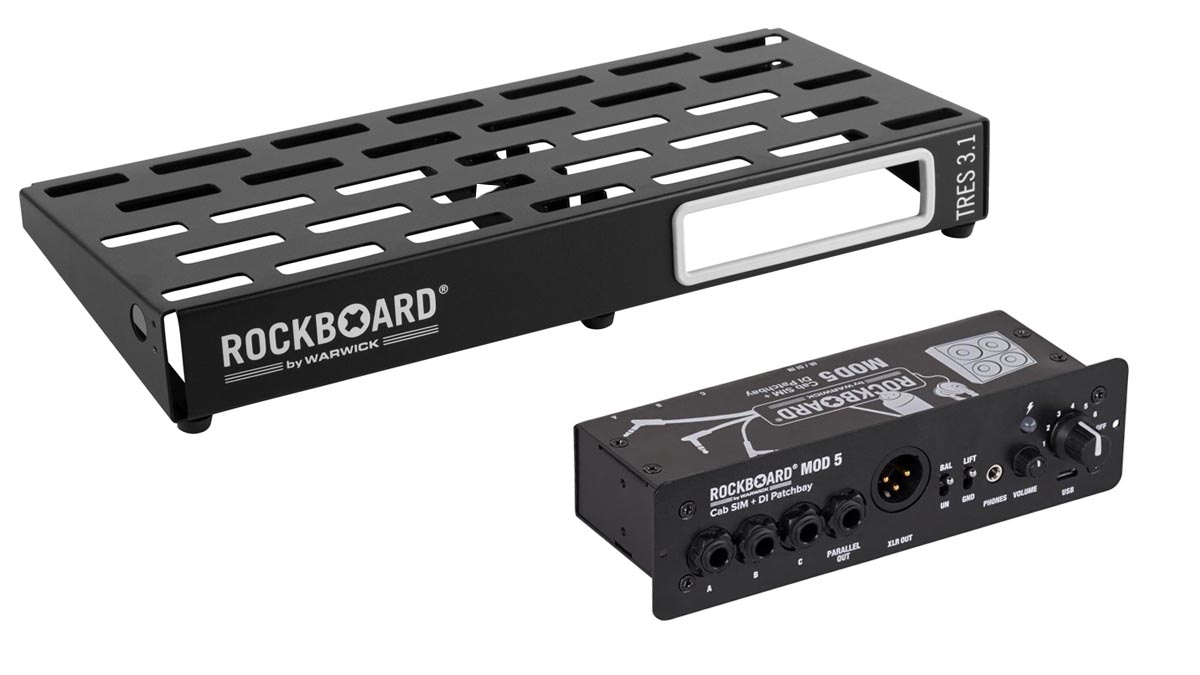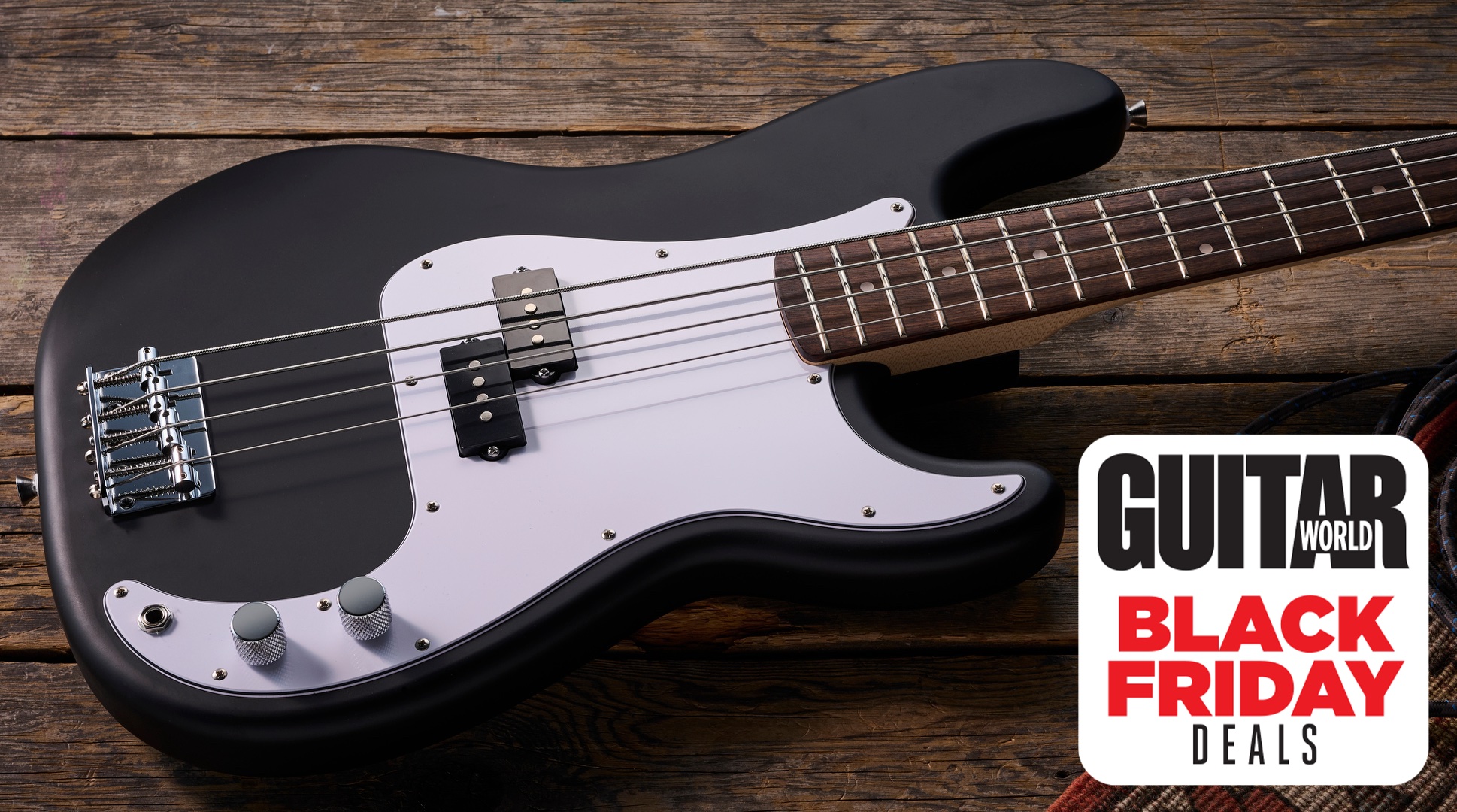Guitar World Verdict
The MOD5 is wery versatile, the possibilities are extensive, while the Tres 3.1 is a great starting place for a solid pedalboard.
Pros
- +
The MOD5 has a great feature set, and it's nice to a have headphone output.
- +
We loved the use of pedal-width apertures on the Tres 3.1.
Cons
- -
Just the one bass amp sim.
You can trust Guitar World
With increasing numbers of bassists turning their backs on traditional - and cumbersome - amp setups in favor of digital solutions, there is now a dizzying array of products available to facilitate every conceivable setup.
The latest offerings from Rockboard, a Warwick product range, continue this trend, offering truly impressive levels of pedalboard construction geekery. We were sent the new MOD5 Cab SIM/Patchbay and theTres 3.1 pedalboard to mount it in.
Rockboard pedalboards come in no less than eight different sizes,from the Duo 2.0 (which will accommodate three to five pedals) to the Cinque 5.4, a meter-long monster that should satisfy even the most enthusiastic pedal aficionado. Our board - the Tres 3.1 - is perfect for the average user, with a surface area enough for about a dozen single-sized pedals.
The board itself is lightweight but sturdy, consisting of a single sheet of folded aluminum with rubber mounting feet. On the rear of the unit is a large aperture to accommodate the installation of Rockboard MODs or patchbays, which we’ll get to in due course.
Each of these products is impressive in its own right, becoming more so when you dig further into the huge catalogue of pedalboard-related gadgets and gizmos offered by Rockboard
I’m no stranger to pedalboard construction, and so the first thing I noticed is the use of single, pedal-width apertures in the top surface rather than continuous rails. The benefit of this setup is that it’s possible to securely attach pedals to the board using cable ties from top to bottom, something that just isn’t possible on mostother boards.

As a musician who has endured the Velcro strips on their pedalboard repeatedly peeling away in the hot weather this summer, this simple feature is very welcome. That said, a quick browse through the online Rockboard catalogue offers up even better solutions, in the form of individual pedal saddles which affix to pedals using their existing screw holes, then snap onto the board without the need for Velcro... I feel a rebuild coming on.
Rockboards are available either with a canvas gig bag or at a highercost, a hard case. We had the canvas bag option: the bag was sturdy enough, although I suspect most serious pedal geeks would opt for the case.
All the latest guitar news, interviews, lessons, reviews, deals and more, direct to your inbox!
The MOD5 is one of a series of MOD Patchbays available from Rockboard and can be easily mounted into the aperture of the board using two small screws, included. The unit offers three TRS Thru input/outputs, as well as an XLR DI Out, ground lift and a headphone output with volume control. There’s also aseven-position rotary selector that allows the user to select one of six predefined speaker cab impulse responses.

Unfortunately for us bass players, five of these are guitar amps, with only the sixth catering for the low end in the form of the response from an Ampeg 8x10. However, it’s possible to record your own cab response using the MOD5 IR Loader software, which connects to the unit using a USB cable, also included.
This latter feature is apt to be one that appeals to guitarists more so than bassists, but for the committed tone-tweakers out there, there’s some fun to be had.
Each of these products is impressive in its own right, becoming more so when you dig further into the huge catalogue of pedalboard-related gadgets and gizmos offered by Rockboard. I was particularly impressed with the options for securely affixing pedals to the board itself, and with the inclusion of a headphone output on the MOD5 - it’s certainly useful to be able to practice with your full effects setup on the road sometimes.
If you’re thinking about getting a new board together, I recommend looking at the Rockboard range: there are options available to suit any need.
Specifications
Rockboard TRES 3.1 Pedalboard
- PRICE: $119.9, £76 (w/gig bag)
- MADE IN: China
- DIMENSIONS: 510 x 234mm / 21” x 9”
- WEIGHT: 1.2kg / 2.65lbs
Rockboard MOD5 Cab SIM/Patchbay
- PRICE: $199, £160
- MADE IN: China
- FEATURES: 3 x ¼” TRS thru, 6 x IR-based speaker cab sims, selectable Mono/Stereo input, selectable Un/Balanced output, ground lift, XLR DI out, parallel ¼” TRS output, 3.5mm stereo headphone output with adjustable volume
For more information, head to Warwick.

